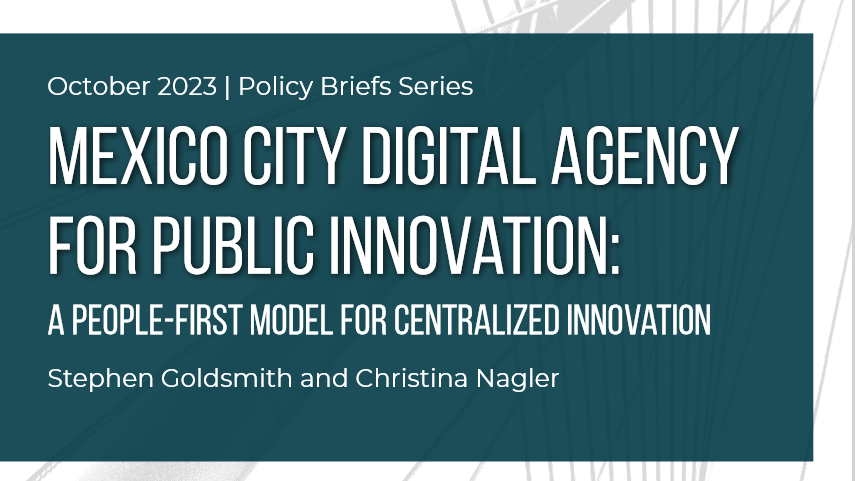- November 2, 2023
- Civic Engagement
Community engagement is tough work. It requires open-minded listening when, understandably, the natural reaction of an official is to defend their positions. It requires finding a way to reach and enhance the civic infrastructure of a city—residents busy with family, jobs, and their own organizations. It requires combatting very real engagement fatigue – residents exhausted by a process that has historically failed to deliver real results. It requires multiple modes of interaction—virtual and in person and in multiple languages. It requires addressing, if not overcoming, a history of harm and neglect – particularly of low-income and communities of color. It requires follow through. And most difficult of all, engagement requires context shifting—what does a matter look like from the viewpoint of a neighbor, or small business owner, or disabled person.
Not too long ago we noted, in our paper on the cycle of responsiveness in cities, that the National Conference on Citizenship found that only nine percent of respondents had attended public meetings in the preceding two years, even though a Pew survey of U.S. municipal managers found that 94 percent of respondents reported “offering opportunities for citizen engagement.” An effective engagement strategy then needs to expand outreach, coordinate that outreach and listening, and then do something with what it hears – and do it in a way that enhances civic fabric, informs better policies and programs and leads to better outcomes. We use the word engagement to include all these functions, not just the initial act of reaching out.
Few cities have worked as much on meaningful and broad engagement as New York. Its NYC Speaks Action Plan surveyed residents throughout the city to inform the city’s policymaking during a time of mayoral transition. And, shortly thereafter, it appointed Betsy MacLean as the city’s first chief engagement officer in December 2022. In addition to the existence of this role, positioning and authority are crucial — MacLean reports directly to the mayor's chief of staff. That way, staff conducting engagement across the administration (for example, the Community Affairs Unit, Housing Preservation and Development or the Parks Department) can work with her team to coordinate with agencies working on related initiatives or in the same neighborhood, provide best practices and technical assistance, and create a feedback loop that includes the mayor and senior officials.
Having an established office also signals the permanence, and importance, of engagement. “The creation of the office, it’s a core part of our infrastructure,” she said, “We don’t want community engagement to be a one-off or a special thing we do every once in a while, but an essential component of everything government does.”
The mandate of the office and MacLean’s experience helps her expand the way the city listens to and learns from New Yorkers about quality-of-life issues, policy priorities and program design. Quantifying the city’s scope of engagement has been a challenging undertaking. While some agencies report on the number of meetings held or the number of residents who showed up, those numbers alone don’t tell the whole story — nor are there even applicable metrics for every type of engagement. Some services, like 311, are easier to collect and analyze data from, but as MacLean points out there is only “a certain slice of New York that uses 311, that’s not everyone, and as a complaint-based system…it skews towards a particular demographic and type of information.”
Leveraging digital tools has been critical to New York City’s expanded approach. City Hall needs to “listen” by identifying what concerns the community in ways that do not require a specific outreach like attending a meeting or registering a complaint. To do this the city is using polling and anonymized sentiment mining to gain real-time, inclusive insights, a process that MacLean called “a super exciting, real time feedback loop.” This increased transparency is incredibly important, as she sees it kicking off a virtuous cycle: “the more we get that information out and people see themselves reflected in the data and in city programs, the more they trust the government.”
Of course, listening can also be carefully constructed to ensure adequate representation from the group who will be most directly affected by a policy change. MacLean has found that some of the strongest data and evidence comes from cross-sector groups, like the collaborative work around reentry housing for formerly incarcerated individuals. The team’s work pulls folks from across the re-entry housing system together to share insights, data and information, from the Department of Corrections to the NYC Housing Authority to the mental health courts to nonprofits providing supportive housing. By bringing everyone together MacLean’s team could see “the whole elephant” to quickly identify gaps and inefficiencies. This example cuts to the core of the engagement headquarters functions, namely modeling best practices as well as sharing resources and facilitating regular conversations.
A second part of the engagement involves increasing the likelihood that resident concerns translate into action. One of the critical issues raised in the year and a half that MacLean has been in her role was the fact that various city agencies, non-profits, city council staff, and more, were engaging with New Yorkers regularly; yet there was no “mechanism to coordinate that engagement, to share information across agencies, to hold a standard of accountability, or to share best practices.” This was not only an observation from her role in the administration, but a reality that she had experienced in her community-based work when she “had been on the receiving end of some pretty bad government-led engagement.” Whether it is from direct feedback or polling, resident insights and concerns need to lead to action. Sometimes the action is quite direct—did the complaint about the continually overflowing trash bin led to a larger bin or one emptied more frequently. Or other times the information generates important areas of follow-up—why, in two demographically similarly precincts, does the community rate the police so much higher in one than in the other. This feedback for management purposes needs to turn into spatially coded benchmarks that will enhance performance.
The scope of the Engagement Office includes another critically important element: the need for a more streamlined and user-friendly approach to doing business with the city. Simplifying access to government services and benefits requires changing the focus from an agency to a user centric approach. This latter effort, which includes complex business process reengineering, remains a high priority of New York City’s CIO Matt Fraser and his customer focus.
Focusing on the Big Picture:
For those of us so long concerned about the health of local institutions and social capital, MacLean’s jarring comment that “to reduce the city resident to a customer-only relationship rips the soul out of democracy” is hugely significant. She believes her work should identify issues that encourage people to participate with neighbors. “What can government do that makes you feel like this is a place where you have some control over your kids’ school, your bus route” or the neighborhood park or local grocery store. She’s spearheading a GIS tool with the primary agencies, which allows them to feed all of their events in and then tag by event type, location, and geography, to at least track relevant in-person activities to guide more targeted engagement efforts – ultimately, to ensure that the city is engaging all New Yorkers.
MacLean sets the right standard for her city and her new office when she lays out her mission emphasizing New Yorkers are not customers, but in fact partners in this “team sport that is democracy.” She certainly has the right definition of all the elements of engagement, and the support of the mayor. Now, if she can turn data into responsiveness and trust, her contributions will match the lofty goals.


 Stephen Goldsmith is the Derek Bok Professor of the Practice of Urban Policy at the Harvard Kennedy School and the
Stephen Goldsmith is the Derek Bok Professor of the Practice of Urban Policy at the Harvard Kennedy School and the 
